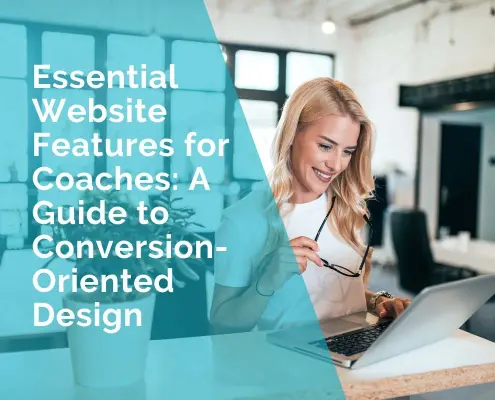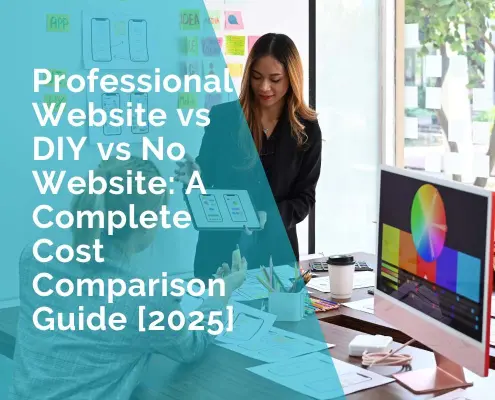Building a Personal Brand as a Coach: Where to Start
Building a personal brand is not just about having a sleek logo or catchy tagline. It’s about shaping how people perceive you, your skills, and the value you offer as a coach.
A strong personal brand not only builds trust but also opens the door to making money as a coach or consultant by allowing you to position yourself as an authority in your niche.
For coaches, this can mean the difference between a steady stream of clients and struggling to get noticed in a crowded market.
This guide dives deep into actionable strategies and examples to help you build a personal brand that sets you apart and drives growth.
Why Personal Branding Matters
Picture this: You’re at a professional networking event, introducing yourself to a room full of potential clients and collaborators. Someone asks, “What makes your coaching different?” If your answer is vague or generic, they’ll likely forget you by the time they finish their drink. This is why personal branding is crucial. A memorable, authentic brand ensures that you stand out and leave a lasting impression.
When you have a solid personal brand, you:
- Establish authority in your niche – People naturally gravitate toward coaches who are seen as experts.
- Differentiate yourself – In a world of countless coaches, your personal brand is your signature that no one can replicate.
- Build trust and rapport – Prospective clients feel like they know you, even before the first consultation.
- Attract high-quality clients – A strong brand acts as a magnet for the clients you want to work with.
Think about figures like Brené Brown or Simon Sinek. Their personal brands communicate authenticity, expertise, and relatability. Clients and audiences feel connected to their stories and teachings, and that connection transforms into loyalty.
Step 1: Define Your Niche and Audience
Attempting to serve everyone dilutes your message. Coaches who specialise not only build stronger brands but also attract more clients. Narrowing your niche can feel intimidating at first, but specificity is key to resonance.
Your niche should reflect not just your passion but also market demand. A clear niche will make it easier to develop coaching website that speak directly to your audience.
Start by asking:
- What specific problems do I solve best? Maybe you thrive in helping executives manage stress or guiding new entrepreneurs through business launches.
- Who benefits most from my coaching? Visualise your ideal client. Are they corporate leaders, small business owners, or individuals seeking personal growth?
- What makes my approach unique? This might stem from your background, life experiences, or unique methodologies.
For example, imagine you spent 15 years climbing the corporate ladder before becoming a coach. Your niche might be helping mid-level managers transition to executive roles. Instead of simply saying, “I’m a leadership coach,” your brand can focus on, “I help managers become impactful leaders who drive results without burnout.”
Your personal story is often the bridge that connects you to potential clients. By weaving in your experiences, your brand becomes more relatable and memorable.
Step 2: Craft Your Brand Message
Your brand message is the cornerstone of how you communicate your value. It’s not just about what you do but why it matters to your clients.
To craft a compelling brand message:
- Focus on Transformation – How does working with you change your client’s life or business?
- Be Clear and Concise – Avoid jargon or buzzwords. Use plain language that resonates.
- Highlight Emotional Connection – People often make decisions emotionally and justify them logically.
For instance, rather than saying, “I help businesses improve productivity,” frame it as, “I help overwhelmed entrepreneurs regain control of their time so they can grow their business without sacrificing personal well-being.”
A great tagline can also reinforce your message. If you specialise in career transitions, a simple line like, “Helping professionals rediscover purpose and confidence in their careers” can encapsulate your entire approach.
Step 3: Design a Professional Online Presence
Your website and online presence are often the first points of contact potential clients have with your brand. A cluttered, outdated site can undermine even the strongest coaching skills.
Key Pages to Include:
- Homepage – This is your virtual handshake. It should clearly communicate who you are, who you serve, and how you help. Use powerful headlines that speak directly to your audience’s pain points and aspirations. A strong CTA (Call to Action) should be immediately visible, guiding visitors to book consultations or download resources.
- About Page – Share your story in a way that highlights your journey and connects to your audience’s needs. Use personal anecdotes that reflect why you started coaching and what drives you.
- Services Page – Detail the specific services you offer. Break down your coaching packages, programs, or workshops clearly. Address the outcomes clients can expect and provide a tiered pricing model if applicable. Each section should have a CTA prompting clients to book a session or contact you for more information.
- Testimonials and Case Studies – Real-world success stories build credibility. Showcase how your coaching has impacted others by including detailed client feedback, before-and-after stories, and quantifiable results.
- Blog or Resources Page – Regularly updated content such as blogs, articles, and downloadable guides can position you as an authority in your field. This also boosts SEO and keeps your audience engaged.
- Contact Page – Make it easy for visitors to get in touch. A simple form, direct email, or scheduling link can streamline inquiries.
Consistency in design is just as important. Use a cohesive colour scheme, professional headshots, and a consistent font style. This visual identity helps build recognition across your website, LinkedIn, and other social platforms.
If you’re unsure where to start, professional web design services tailored for coaches can save time and elevate your online presence.
Step 4: Build Thought Leadership
A personal brand isn’t static; it grows through consistent visibility and engagement. By sharing insights, tips, and thought leadership content, you establish yourself as an authority in your field.
Ways to build thought leadership:
-
- Write Articles and Blogs – Address pressing issues and trends in your niche. Publish guest articles on reputable sites to reach new audiences.
- Offer Free Resources – Share checklists, guides, and templates that provide immediate value to your audience.
- Collaborate with Industry Leaders – Appear on podcasts, co-author articles, or conduct joint webinars with other thought leaders. This expands your reach and builds credibility.
- Write a Book – Position yourself as a leading expert by publishing a book that encapsulates your coaching philosophy and methods.
- Host Webinars and Workshops – Regularly engage with your audience through online events, providing real-time value and nurturing trust.
Check out these tutorials for inspiration:
Explore tutorials for coaches

Make Your Website Work for You!
Book your free strategy session with me today and discover how tailored web design can transform your coaching website.
Step 5: Establish Credibility with Testimonials and Case Studies
Testimonials and case studies are powerful tools to build trust and establish authority in the coaching space. While testimonials provide quick social proof, case studies offer a detailed narrative that highlights the journey and transformation your clients experience.
Collect Impactful Testimonials
Gather testimonials regularly from satisfied clients, but take it a step further by guiding clients to provide detailed feedback. Ask them to focus on measurable outcomes or personal growth rather than general praise.
Instead of generic comments like:
“Jane is a great coach,”
encourage something more specific:
“Jane’s coaching helped me land five new clients and increase my revenue by 30% in six months.”
When possible, opt for video testimonials to add authenticity and emotional engagement. Video captures tone, enthusiasm, and sincerity, which can significantly influence potential clients.
Develop Case Studies for Deeper Insight
Go beyond testimonials by crafting in-depth case studies showcasing how your coaching transformed clients’ businesses or lives. A well-crafted case study not only tells a story but provides evidence of your expertise in action.
Structure for a Case Study:
- Client Background:
Briefly introduce the client – their industry, challenges, and goals. - The Problem:
Detail the specific issues they faced before your coaching. - Your Approach:
Outline the coaching strategies, frameworks, or exercises you used to address these challenges. - The Transformation:
Share the results – increased revenue, improved confidence, streamlined business processes, or expanded skill sets. Use metrics where possible. - Client Testimonial (Direct Quote):
Include a personal reflection from the client about their experience.
Showcasing Case Studies
- Website: Dedicate a page to client success stories or weave them into your services page.
- Blog Posts: Turn case studies into educational blog posts to highlight key coaching techniques.
- Newsletters: Share snippets of client wins with your email subscribers to maintain engagement and social proof.
- Webinars/Workshops: Use client success stories during live events to illustrate the effectiveness of your methods.
Highlighting in Your Bio
Your coaching bio should seamlessly incorporate these testimonials and case studies. Highlight metrics or transformative outcomes to demonstrate your expertise:
“I have helped over 50 small business owners double their client base in under a year through personalised coaching strategies.”
Invite potential clients to read full case studies or watch video testimonials by linking to dedicated sections on your website. This provides further proof of your abilities and reinforces trust.
A strong personal brand doesn’t just open doors—it keeps them open long after the first impression fades.
Ivana Katz
Step 6: Develop Strategic Partnerships
Strategic partnerships can significantly amplify your brand by aligning with complementary services. Examples include:
- Partnering with Therapists – If you’re a life coach, working with therapists can create holistic wellness plans for clients.
- Collaborating with HR Consultants – Leadership coaches can partner with HR professionals to offer coaching as part of leadership development programs.
- Business Consultants and Marketing Agencies – Joint services where you handle personal development coaching while the agency handles business growth can provide comprehensive solutions to clients.
Actively network within these industries and propose mutually beneficial collaborations.
Step 7: Measure and Refine Your Brand
Your brand is not a “set and forget” element. Regular evaluation and refinement ensure that it stays relevant and continues to grow with your audience’s evolving needs.
Ways to Measure and Refine Your Brand:
- Track Key Metrics – Use tools like Google Analytics to monitor website traffic, bounce rates, and engagement levels. High bounce rates may indicate unclear messaging.
- Client Feedback – Regularly solicit feedback through surveys or one-on-one conversations. Ask what clients found valuable and what could be improved.
- Social Engagement – Evaluate which posts, videos, or articles get the most interaction. Double down on content that resonates.
- Refresh Visuals and Messaging – Every year, revisit your logo, tagline, and messaging to ensure they align with your growth.
Refining your brand isn’t about overhauling it entirely – small adjustments can make a significant impact over time.
Step 8: Amplify Your Brand Through Community Engagement
One of the most overlooked aspects of personal branding is engaging with your community. Building strong relationships within your professional and local communities reinforces your credibility and expands your reach.
- Host Local Events or Workshops – Offering free or low-cost workshops can position you as a leader in your area. This not only enhances your reputation but also provides opportunities for face-to-face interactions with potential clients.
- Participate in Online Forums and Groups – Join industry-specific groups on LinkedIn or Facebook. Answer questions, share insights, and offer value-driven content.
- Volunteer Your Expertise – Consider offering free coaching sessions for non-profits or community organisations. This builds goodwill and can lead to referrals.
- Collaborate with Local Businesses – Partner with other local professionals for joint events or services. Cross-promote your offerings to reach wider audiences.
Step 9: Create and Promote Signature Programs
Signature programs are transformative, in-depth offerings that establish you as an authority while generating significant revenue. These structured coaching packages or courses should reflect your unique methodology and provide clients with measurable outcomes.
- Develop Core Offerings – Map out the core pillars of your coaching philosophy and use them as the foundation for your program. For example, if you specialise in career growth, your program could focus on leadership development, personal branding, and goal setting.
- Offer Multiple Tiers – Create basic, advanced, and VIP options to cater to different needs and budgets. Lower-tier options could include self-guided modules, while higher tiers offer one-on-one coaching or exclusive content.
- Launch with Authority – Host live webinars, Q&A sessions, or limited-time discounts during the launch phase to generate excitement. Use email marketing and social media to build anticipation and secure early sign-ups.
Step 10: Develop a Strong Content Strategy
A comprehensive content strategy ensures you stay top of mind with your audience and continually provide value.
- Blogging – Write blog posts that address common questions, pain points, and challenges faced by your ideal clients.
- Video Content – Create YouTube videos or Instagram reels that showcase your expertise, offer tips, or demonstrate case studies.
- Podcasting – Launch a podcast where you discuss industry trends or interview other professionals.
- Email Marketing – Build an email list and send regular newsletters featuring insights, tips, and updates on your coaching services.
Recommended Content Types for Personal Branding
| Content Type | Description | Platform Examples |
|---|---|---|
| Blog Posts | Written content that solves client problems and adds value. | WordPress, Medium, LinkedIn |
| Webinars | Live presentations to engage with potential clients. | Zoom, WebinarJam, Demio |
| Short Videos (Reels) | Bite-sized insights or tips that are easy to digest. | Instagram, TikTok, YouTube Shorts |
| Podcasts | Long-form audio content to build thought leadership. | Spotify, Apple Podcasts, Anchor |
| E-books/Guides | Downloadable resources to grow your email list. | Canva, Adobe InDesign, Amazon KDP |

Make Your Website Work for You!
Book your free strategy session with me today and discover how tailored web design can transform your client engagement.
Step 11: Use Social Media to Expand Reach
Social media is essential for brand visibility and engagement. By actively sharing content and engaging with your audience, you establish trust and keep your services top of mind.
Social Media Strategies to Grow Your Brand:
- Choose the Right Platforms – Focus on platforms where your audience is most active. LinkedIn is ideal for business and career coaching, while Instagram and TikTok cater well to lifestyle and wellness niches.
- Content Variety – Mix educational posts, client testimonials, behind-the-scenes videos, and live sessions. Use reels, carousels, and infographics to keep content visually engaging.
- Engage Actively – Respond to comments, join relevant groups, and participate in trending discussions. Engagement fosters community and shows authenticity.
- Hashtags and Keywords – Use industry-specific hashtags and keywords to improve content visibility. Tools like Hashtagify and LinkedIn’s search bar can help identify relevant terms.
- Paid Ads and Boosted Posts – Consider boosting high-performing posts or running targeted ads to attract new followers and leads. Even small ad budgets can yield significant returns when targeted effectively.
Step 12: Networking and Speaking Engagements
In-person and virtual engagements allow you to establish credibility and grow your brand through direct interaction.
- Speak at Events – Apply to speak at industry conferences, local meetups, or online webinars to establish yourself as an authority in your niche. Start by identifying events that align with your expertise, such as leadership summits, entrepreneur workshops, or wellness retreats. Consider submitting proposals for breakout sessions, panels, or keynote presentations that address trending topics or client pain points. Engage with event organisers on LinkedIn or through professional networks to increase visibility and improve your chances of being selected.
- Join Professional Groups – Become an active member of coaching associations, mastermind groups, and online communities. Engaging in these groups can provide valuable networking opportunities, insights into industry trends, and access to potential clients. Look for associations such as the International Coaching Federation (ICF) or niche-specific groups on LinkedIn and Facebook. Active participation through contributing to discussions, sharing insights, and offering help can establish you as a thought leader within the group. Consider enrolling in mentorship programs or collaborative initiatives offered by these groups to deepen relationships and expand your influence.
- Host Your Own Events – Organise a variety of in-person or virtual events tailored to your niche. Workshops can focus on specific skills or transformation journeys, providing deep dives into areas where clients need the most guidance. Retreats offer immersive experiences, allowing clients to step away from daily life and focus on personal growth, while networking events facilitate meaningful connections among peers and potential clients. Consider partnering with other professionals to co-host events, expanding reach and adding value through diverse expertise. Ensure events are promoted through social media, email lists, and local community boards to maximise attendance and engagement.
Resources for Speaking Engagements:
- SpeakerHub – A platform that lists speaking opportunities worldwide.
- TEDx – Apply for local TEDx events to gain visibility and credibility.
- Eventbrite – Browse for local events or offer to speak at existing workshops.
Step 13: Develop an Online Community or Membership Program
Building a community around your brand can create long-term engagement and loyalty. This step focuses on creating Facebook groups, LinkedIn groups, or exclusive membership platforms where clients can interact, learn, and grow together.
- Offer Exclusive Content – Provide members with access to webinars, Q&A sessions, or bonus content not available elsewhere.
- Create a Safe Space – Foster collaboration and peer support within the group.
- Charge for Premium Memberships – Monetize by offering tiered membership levels with varying degrees of content and interaction.
Tools to Explore
- Mighty Networks – Build and monetize your own community platform.
- Circle – A community platform integrated with courses and memberships.
Step 14: Publish a Book or Long-Form Content
Publishing a book is a powerful way to establish authority and credibility in your niche. Books and comprehensive guides position you as an expert and open doors to speaking engagements, interviews, and new clients.
- Start with an E-book – If a full-length book feels overwhelming, begin with an e-book addressing a common problem in your niche.
- Self-Publish – Platforms like Amazon Kindle Direct Publishing (KDP) make it easy to self-publish.
- Collaborate with Co-Authors – Partner with other coaches or professionals to co-author a book, sharing expertise across multiple disciplines.
Step 15: Invest in Personal Branding Photography and Videography
High-quality visuals enhance your website, social media, and marketing materials, elevating the overall perception of your brand.
- Book a Professional Photoshoot – Showcase your personality with professional headshots and lifestyle photos that reflect your brand identity.
- Video Introductions – Record a personal introduction video for your website’s homepage, sharing your story and coaching philosophy.
- Content Videos – Batch record content videos to share regularly on social platforms.
Step 16: Track Competitor Brands and Differentiate Yourself
Understanding what other coaches in your niche are doing can help you identify gaps and opportunities.
- Analyze Their Messaging – What do they emphasize? How can you offer something unique?
- Position Differently – Highlight areas they overlook or adopt a unique tone or visual style.
- Offer a Distinct Signature Process – Develop a proprietary coaching methodology to set you apart.
Resources for Your Coaching Business
Coaching Networks and Communities
| Resource Name | Description | Link |
|---|---|---|
| International Coaching Federation (ICF) | Global network for professional coaches with certifications. | Visit ICF |
| SpeakerHub | Platform to find and apply for speaking engagements worldwide. | Visit SpeakerHub |
| LinkedIn Groups | Engage with niche-specific professional coaching communities. | Visit LinkedIn |
| Mighty Networks | Build and monetize your own online coaching community. | Visit Mighty Networks |
| Eventbrite | Search for events to speak at or host your own. | Visit Eventbrite |
Tools and Software for Brand Building
| Tool | Purpose | Link |
|---|---|---|
| Canva | Design graphics and social media posts. | Visit Canva |
| Descript | Edit podcasts and videos. | Visit Descript |
| Buffer | Schedule social media posts. | Visit Buffer |
| Mailchimp | Manage email lists and newsletters. | Visit Mailchimp |
| Teachable | Create and sell online coaching courses. | Visit Teachable |
Building a personal brand as a coach is an evolving journey that requires strategy, consistency, and authenticity. By clearly defining your niche, crafting a compelling brand message, and establishing a strong online presence, you lay the foundation for long-term success. Thought leadership, social proof, and community engagement further solidify your authority, while ongoing measurement and refinement ensure your brand stays relevant and impactful.
Remember, personal branding is not a one-time task but a continuous process of growth and adaptation. As you evolve as a coach, your brand will reflect your experience, insights, and unique value. By investing in your personal brand, you not only attract clients but build meaningful, lasting connections that fuel your coaching career for years to come.
Frequently Asked Questions
What is personal branding for coaches?
Personal branding builds trust and credibility, which are essential for attracting clients. It differentiates you from the thousands of other coaches competing in the same space. A well-crafted brand can:
- Make you memorable.
- Position you as an authority in your niche.
- Increase client loyalty and referrals.
- Streamline marketing efforts by creating a cohesive message across platforms.
In short, personal branding amplifies your reach and ensures your services are aligned with the needs of your target audience.
How can I define my coaching niche?
To define your niche:
- Reflect on your expertise – Identify the areas where you’ve achieved significant results or have specialized knowledge.
- Identify your ideal client – Think about the people you love working with and the problems you enjoy solving.
- Evaluate market demand – Research if there’s a demand for the niche you’re targeting.
- Consider your personal story – Often, your own journey can become the foundation of your niche, creating deeper relatability.
Examples of niches include career transitions, leadership coaching, wellness, or business growth coaching. The more specific your niche, the easier it is to attract clients looking for targeted help.
What elements should be included in my personal brand as a coach?
Key elements of a strong personal brand include:
- Brand Message – A clear, concise statement that highlights who you serve and the transformation you provide.
- Visual Identity – Logos, colors, and fonts that reflect your personality and resonate with your audience.
- Online Presence – A well-designed website and active social media profiles that consistently communicate your values and services.
- Testimonials and Case Studies – Social proof that validates your expertise and highlights real client results.
- Tone and Voice – The way you communicate (professional, friendly, inspiring) should be consistent across content and platforms.
How do I create a compelling brand message?
Crafting a compelling brand message requires:
- Clarifying the Outcome – Focus on the transformation you offer. For example, “I help overwhelmed professionals build confidence and find career clarity.”
- Using Emotional Language – People connect with stories and emotions. Highlight the emotional benefits your clients experience.
- Keeping it Simple – Avoid jargon and use clear, everyday language that resonates with your audience.
A compelling message not only describes what you do but focuses on the benefits and emotional rewards clients will gain.
What role does authenticity play in personal branding?
Authenticity is the cornerstone of a successful personal brand. Clients are drawn to genuine and relatable coaches who share their values, experiences, and even struggles. Authenticity helps:
- Build deeper trust with potential clients.
- Differentiate you from others by embracing your unique story.
- Foster long-term loyalty and stronger client relationships.
Avoid trying to mirror someone else’s brand – instead, focus on showcasing your true self.
How can I leverage social media for my coaching brand?
Social media is a powerful tool to increase visibility and engagement. To leverage it effectively:
- Choose the Right Platforms – LinkedIn for career coaching, Instagram for lifestyle coaching, and TikTok for personal growth niches.
- Post Valuable Content – Share client success stories, live sessions, quick tips, and personal reflections.
- Engage with Your Audience – Respond to comments, host Q&A sessions, and join relevant group discussions.
- Consistency is Key – Develop a content calendar and post regularly to keep your brand top-of-mind.
What are effective strategies for building thought leadership as a coach?
To build thought leadership:
- Publish Articles – Write blog posts, LinkedIn articles, or guest blogs in reputable publications.
- Speak at Events – Apply to conferences, webinars, or podcasts to share your insights.
- Host Webinars – Conduct free workshops and training sessions to demonstrate your expertise.
- Collaborate – Partner with other industry leaders to co-create content or co-host events.
By consistently providing value and showcasing expertise, you establish yourself as a go-to authority in your niche.
How important is a professional website for my coaching brand?
A professional website acts as your digital storefront. It creates a strong first impression and centralizes all information about your services. Key benefits include:
- Showcasing testimonials, case studies, and portfolio pieces.
- Generating leads through contact forms and downloadable resources.
- Housing valuable content like blogs, videos, and lead magnets.
Without a website, you risk losing credibility and missing opportunities to engage potential clients.
What are lead magnets, and how can they benefit my coaching business?
Lead magnets are free resources (eBooks, guides, templates) offered in exchange for email addresses. They:
- Attract potential clients to your ecosystem.
- Build your email list for nurturing campaigns.
- Establish trust by providing immediate value.
For example, a leadership coach might offer a “10-Step Leadership Plan” as a downloadable PDF.
How often should I update my personal brand?
Your brand should evolve as your skills, services, and audience needs grow. Perform a brand audit annually to ensure it aligns with your current goals and market trends.
 Ivana Katz from Websites 4 Small Business is an award winning web designer who builds websites that build your business. She provides unbeatable web design services to fit your budget.
Ivana Katz from Websites 4 Small Business is an award winning web designer who builds websites that build your business. She provides unbeatable web design services to fit your budget.
The end result? Professional, custom-made sites that give your business the extra oomph it needs to stand out from the competition and make an impact.
Whether you’re a brand-new business or an established one ready to improve your digital presence, Ivana makes it easy to get your business online very quickly. Her websites are professional, tailored to fit your budget, and give your business a serious boost.
Download your FREE copy of “Ultimate Website Design Secrets Blackbook – 10 Bulletproof Strategies for Designing an Outrageously Successful Website”










